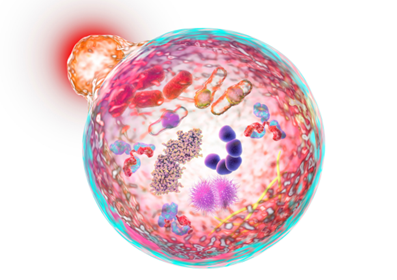Autophagy
Autophagy is one of the intracellular proteolytic mechanisms related to programmed cell death and several disease. Professor Emeritus Yoshinori Ohsumi of Tokyo Institute of Technology, who elucidated the mechanism of autophagy, won the Nobel Prize in Physiology or Medicine in 2016. Fujifilm Wako provides high-performance antibodies against LC3, Atg7 and SQSTM1/A170/p62 which play important roles in autophagy.
Product Line-up
More Information
What Is Autophagy?

Autophagy is a phenomenon in which intracellular components (proteins, organelles, etc.) are sequestered by lipid bilayer membrane called the autophagosome and then degraded in autolysosomes, which are formed by a fusion between autophagosomes and lysosomes.
The main role of autophagy is the removal of unnecessary cellular components that occur in normal cells. In addition, autophagy actively degrades components of the body to regenerate substances necessary for survival under starvation conditions. Autophagy is also activated to remove damaged cellular components.
Autophagy-related Molecules
Molecules related to autophagy were identified in studies using yeast models. Professor Yoshinori Ohsumi was awarded the 2016 Nobel Prize in Physiology or Medicine for his work on the mechanism of autophagy in yeast and identification of several autophagy-related genes (AuTophaGy/ATG genes).
Genes required for autophagy in mammalian cells include Atg5, Atg7, LC3, and Beclin. Atg5, Atg7, and LC3 are important factors in the elongation of the isolation membrane, and Beclin is involved in the initial steps of autophagosome formation. These molecules are conserved from yeast to mammalian cells. However, autophagy that does not require Atg5, Atg7, or LC3 has also been reported, suggesting different mechanisms.
Fujifilm Wako offers antibodies against Atg7 and LC3, and also against SQSTM1/A170/p62, which are expressed in response to oxidative stress and bind to LC3.
References
- “Cell Death” ed. by Tanaka, M. and Nakano, H., Yodosha, Japan, (2016). (Japanese)
For research use or further manufacturing use only. Not for use in diagnostic procedures.
Product content may differ from the actual image due to minor specification changes etc.
If the revision of product standards and packaging standards has been made, there is a case where the actual product specifications and images are different.



